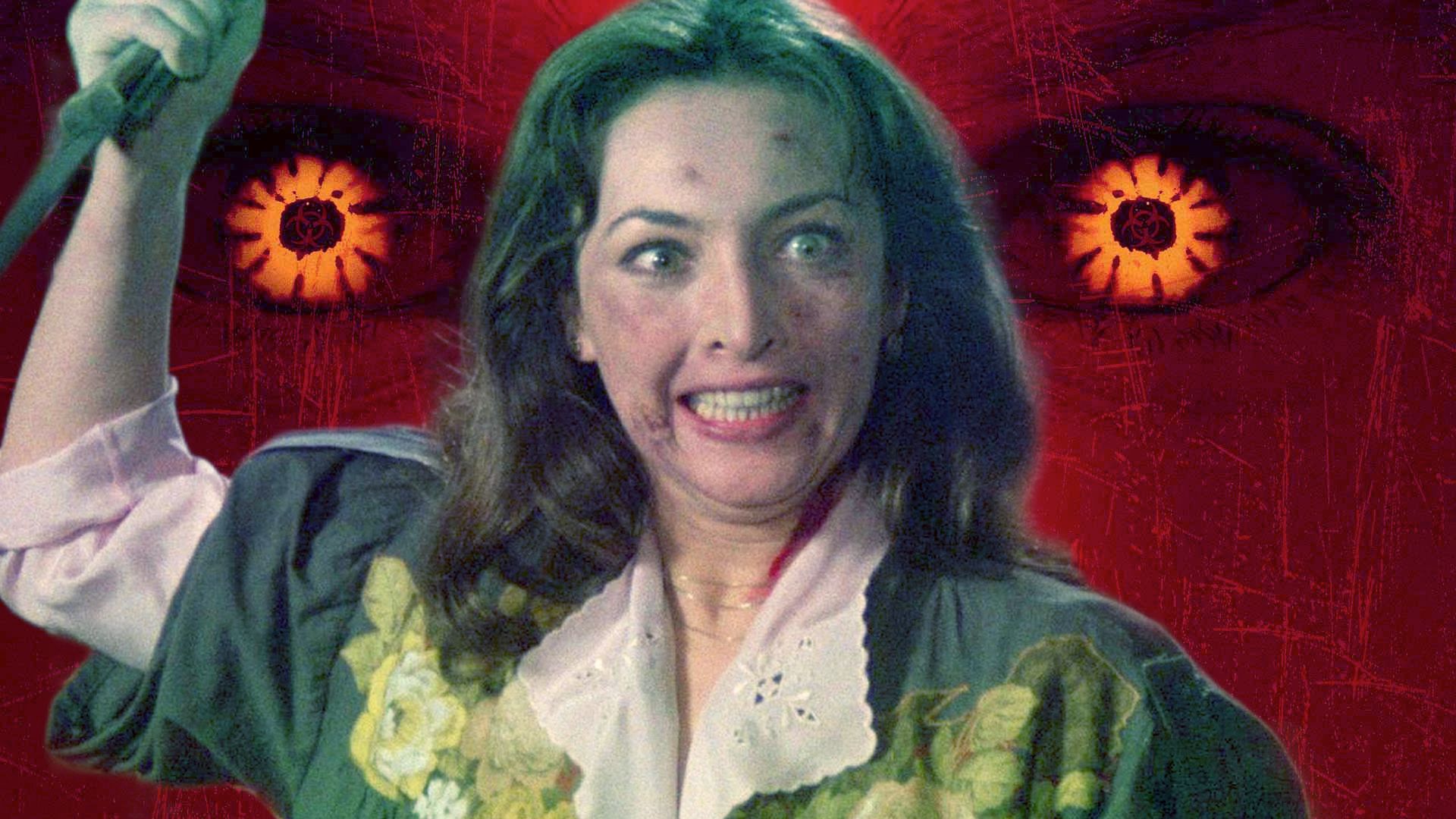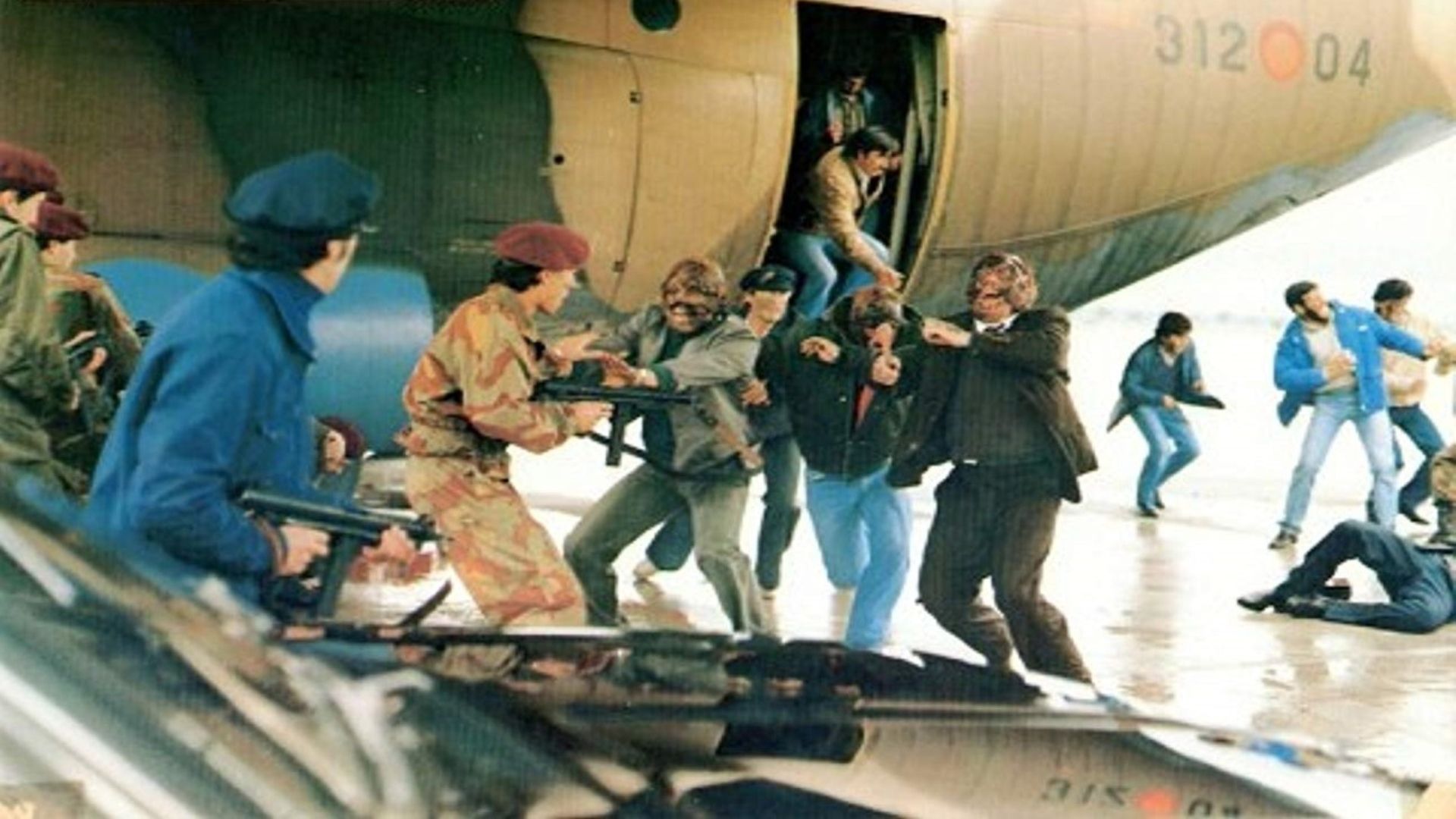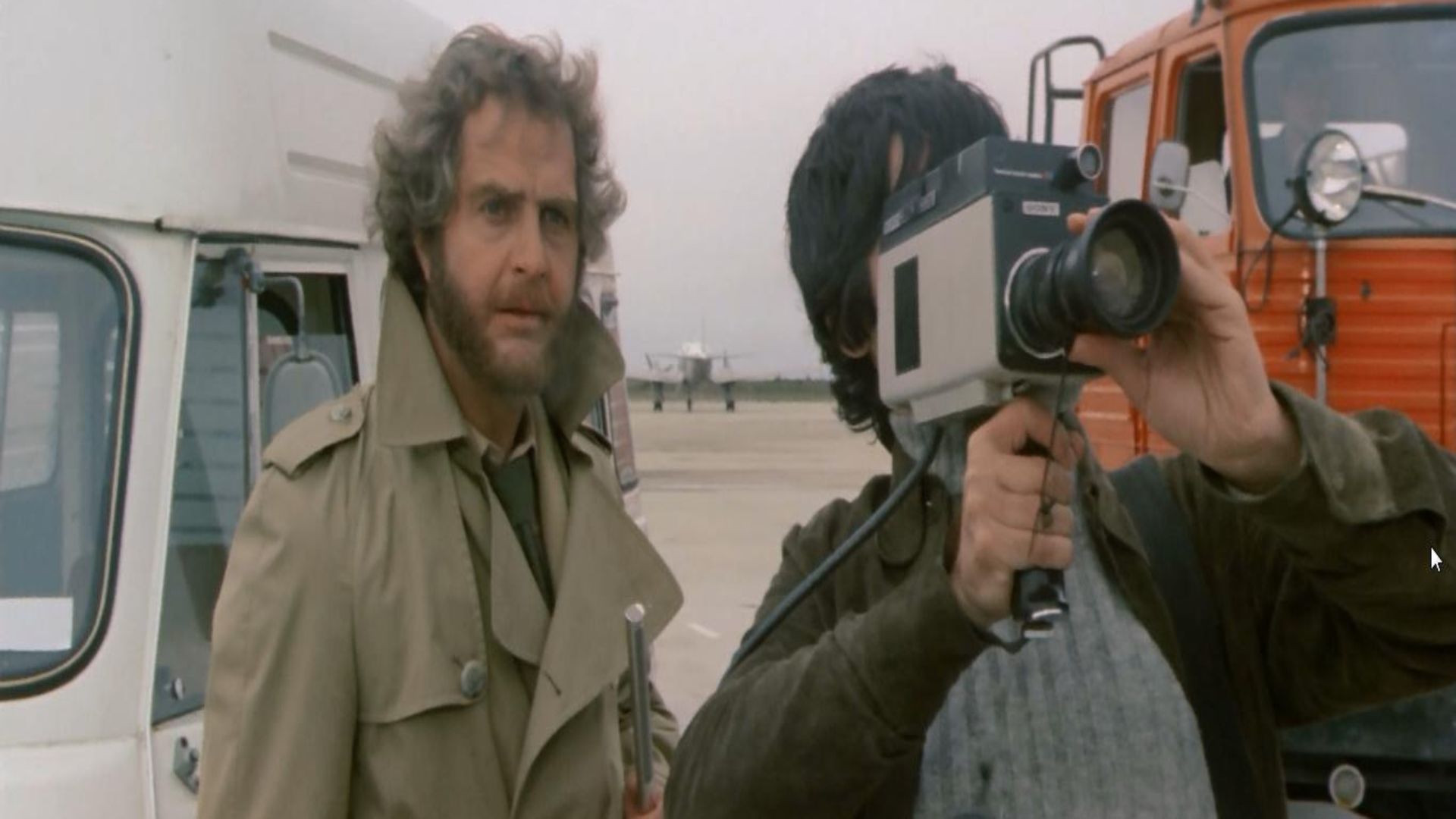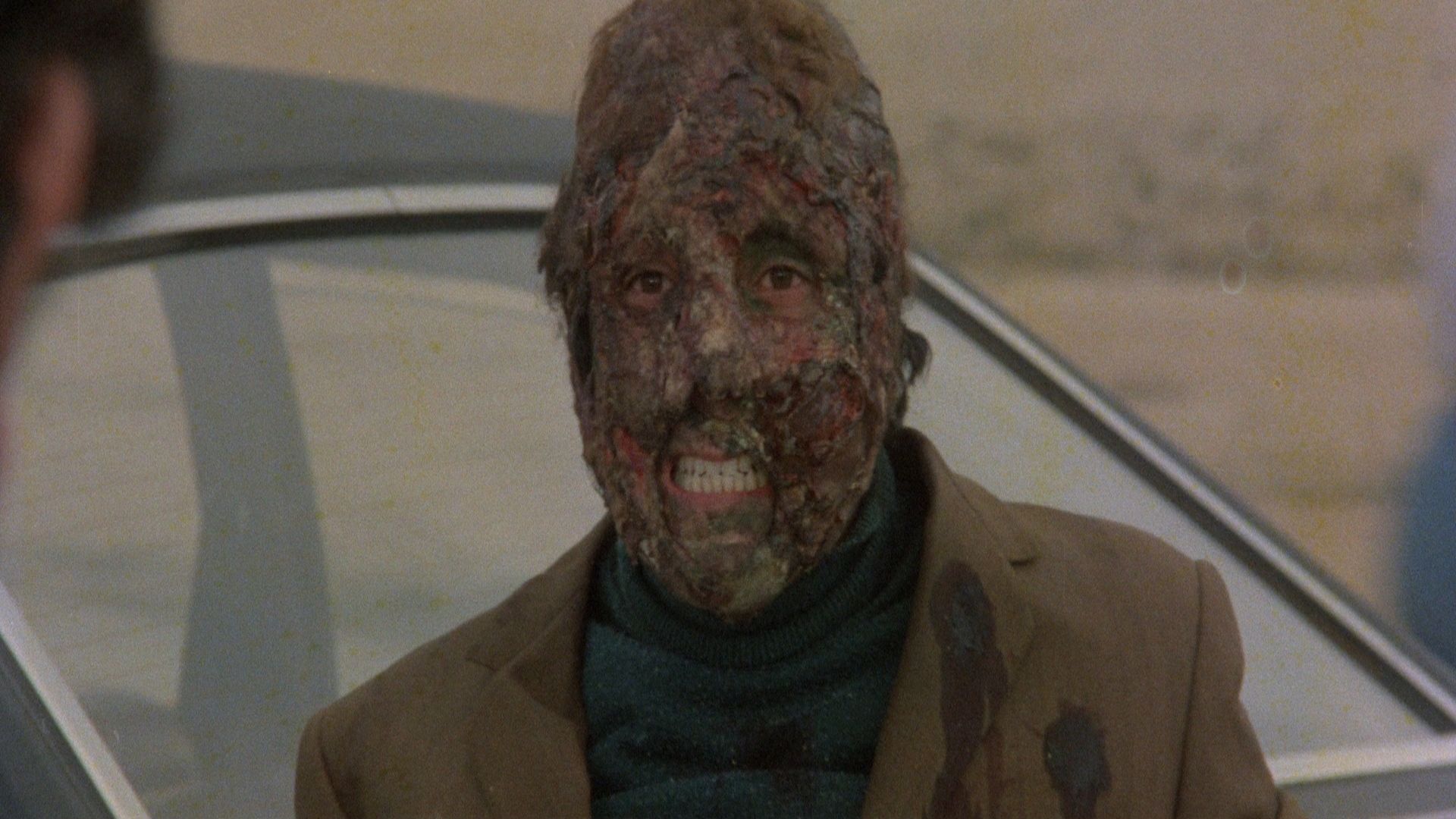
As someone who grew up during the tail-end of the Cold War, I can personally attest to the palpable fear that hung over our world like a dark cloud. The threat of nuclear annihilation was an ever-present specter, and it’s no wonder that films like Umberto Lenzi’s “Nightmare City” resonated so deeply with audiences.
In the year 2002, the movie “28 Days Later” made its debut in cinemas, rapidly gaining favor among horror enthusiasts due to its rapid-fire action and swiftly attacking zombies. The film’s themes of contagion and hidden political critique earned it acclaim from both critics and fans as a work that redefined the genre and revitalized the zombie movie. However, prior to “28 Days Later”, the 1980 release “Nightmare City”, directed by Umberto Lenzi, had already escalated the intensity and brutality of the zombie genre while also offering commentary on the growing nuclear arms race, setting a precedent for the genre’s evolution.
Umberto Lenzi’s films span several film genres. In “Cannibal Ferox” and “Eaten Alive!”, Lenzi pushed the violence and savagery of Amazon cannibal films to unprecedented levels, a subgenre he had helped establish with his 1972 film “Man from Deep River”. His giallo films, including “Seven Bloodstained Orchids”, “A Quiet Place to Kill”, and “Eyeball”, are highly regarded by fans of the crime thrillers known for their yellow paperback covers. “Nightmare City” is a notable contribution to the wave of zombie apocalypse films that dominated during the late 1970s and 1980s, with films like “28 Days Later”, the 2004 remake of “Dawn of the Dead”, and most recently, “The Sadness”, all tracing their roots back to it.
Striking with Quickness and Ferocity

The zombie has been used as a means to strike fear into audiences and sometimes serves as a vehicle for multiple forms of social commentary and satire. The most well-known use of the zombie as an allegorical means of commentary is Dawn of the Dead, in which Romero illustrated the pitfalls of consumerism. In The Serpent and the Rainbow, Wes Craven, while taking liberties with the book by Wade Davis of the same name, shed light on the Duvalier regime, which ruled Haiti for many years and incorporated Voodoo folklore into propaganda and oppression.
In the tense atmosphere of the Cold War, where the potential for nuclear devastation loomed large between the United States and the Soviet Union, the film “Nightmare City” explores this terrifying scenario, portraying the annihilation of humanity and the disintegration of social norms. Swiftly setting the stage, a military transport plane arriving at an airport, as reported by journalist Dean Miller (Hugo Stieglitz), releases a wave of radiation-infected zombies upon landing, sparking chaos as they indiscriminately wreak havoc with relentless brutality, employing guns, knives, and whatever tools come their way to strike down unsuspecting victims.
In a chilling depiction from my perspective, Nightmare City brilliantly portrays the chaos and swiftness that could ensue following a nuclear disaster, serving as a haunting reminder of potential realities. The zombies in this film symbolize the rapid spread of disease, leaving hardly any hope for respite. From dancers at a studio to soldiers, everyone is caught in the brutal crossfire unleashed by the relentless onslaught of the undead horde. Director Lenzi’s audacity to deviate from typical zombie movie tropes offers a unique exploration into the dark side of nuclear power and its ominous impact on humanity. Interestingly, the use of weapons like machetes and machine guns by the zombies mirrors the fearful possibility of our own creations being turned against us in an uncontrolled orgy of carnage and violence.
A Breakdown of Order Among Chaos

In Nightmare City, the focus is on rapid-action sequences, yet Lenzi delves deeply into the ineffectiveness of government and other organizations to tackle a crisis situation. This theme, vividly portrayed in the 1984 BBC film Threads, which depicted the chaos following a nuclear disaster, was particularly relevant during the Cold War era. General Murchinson (played by Mel Ferrer) suppresses information about the zombie outbreak and views the ensuing turmoil as mere civil unrest. He perceives the epidemic caused by the infection as a means of purging undesirables, offering a social critique on the disconnect between those in power and the general populace.
In the film Nightmare City, although the exaggerated use of makeup might seem humorous, it also echoes certain events during the Cold War. The military hierarchy, personified by Murchinson, hidden away in their fortresses while leaving the general public to struggle, symbolizes a twisted version of survival of the fittest. Remnants of these secret bunkers and war rooms found after the end of the Cold War support this notion. Consequently, it’s easy to see that those in power would be protected from a nuclear apocalypse and its aftermath, while ordinary people were left as mere pieces on a chessboard, sacrifices for a greater cause. Essentially, Nightmare City portrays the rapid-striking zombies as the catastrophic event that the population might experience if a global disaster occurs.
In the final scene of “Nightmare City,” Miller finds himself back in his bed, understanding that the events he experienced were merely a dream. However, this dreamlike scenario eerily echoes the beginning of the movie. The plane’s landing and the chilling message, “The nightmare becomes reality,” underscore global affairs. This suggests that the world’s fears and paranoia, symbolizing a potential self-destruction, are alarmingly close to becoming a grim reality.
An Influential FIlm Far Ahead of Its Time

Horror films, which some view as merely a form of entertainment and escape, occasionally take on a more subversive role, serving as commentary on current events and mirroring public fears. For instance, during a time when the looming threat of global destruction was imminent, Nightmare City effectively portrayed and amplified the collective anxiety and paranoia within the population while simultaneously delivering an abundance of action to cater to those seeking thrills.
Movies like “28 Days Later,” “World War Z,” and “The Sadness” deliver pulse-pounding action along with swift zombie chases, while effectively showcasing the despair that arises from societal collapse. It’s essential to acknowledge Umberto Lenzi’s role in creating such terrifying scenarios. “Nightmare City,” often considered a low-budget production, deserves recognition for mirroring the lingering anxieties of many. As the closing text prophesied, our nightmares may indeed materialize into reality. Watch on Kanopy.
Read More
- 10 Most Anticipated Anime of 2025
- USD CNY PREDICTION
- Pi Network (PI) Price Prediction for 2025
- Silver Rate Forecast
- Gold Rate Forecast
- USD MXN PREDICTION
- Brent Oil Forecast
- USD JPY PREDICTION
- EUR CNY PREDICTION
- Ash Echoes tier list and a reroll guide
2024-10-15 02:01